 by "ttyymmnn" (ttyymmnn)
by "ttyymmnn" (ttyymmnn)
Published 10/13/2017 at 12:35
 by "ttyymmnn" (ttyymmnn)
by "ttyymmnn" (ttyymmnn)
Published 10/13/2017 at 12:35
Tags: wingspan
; planelopnik history
; Planelopnik
STARS: 17
!!! UNKNOWN CONTENT TYPE !!!
Welcome to
This Date in Aviation History
, getting of you caught up on milestones, important historical events and people in aviation from October 11 through October 13.
!!! UNKNOWN CONTENT TYPE !!!
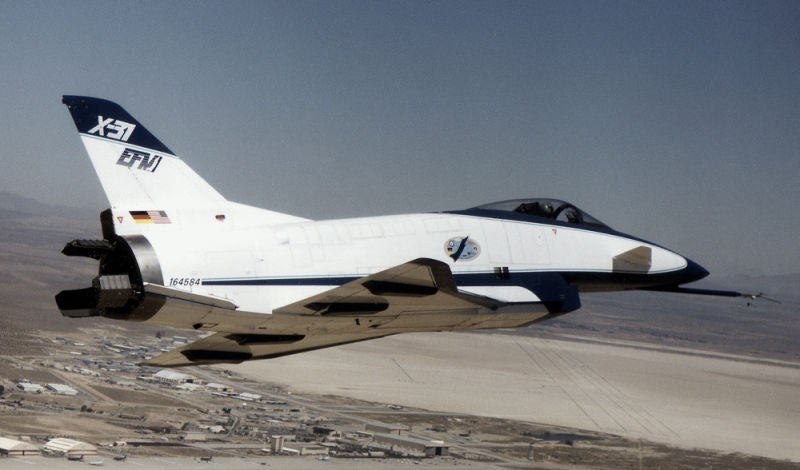
October 11, 1990 – The first flight of the Rockwell-MBB X-31. The aerial dogfight finds its roots in WWI, when opposing pilots began shooting at each other in the air with rifles and pistols they carried aloft in their aircraft. Very quickly, though, the engagements got much more serious. Pilots armed their aircraft with machine guns, air forces produced dedicated fighter aircraft, and aerial warfare became as much a science as an art. Even in the modern era of supersonic jets and guided missiles, it’s still of tremendous importance to “get on the six” of your opponent, maneuvering into position to shoot them down. But pushing beyond the aircraft’s abilities can lead to a stall , putting the pilot in grave danger of losing the fight—and his life. Beginning in 1990, a team of engineers from Rockwell and Messerschmitt-Bölkow-Blohm (Rockwell-MBB) joined together to investigate the benefits of thrust vectoring , a system that directs the propulsion from the engine and uses it to augment the traditional control surfaces of the aircraft. Using parts from experimental and existing aircraft, such as the front end of a McDonnell Douglas F/A-18 Hornet , the landing gear and other parts from the General Dynamics F-16 Fighting Falcon , parts from Boeing V-22 Osprey , F-16XL , and even a Cessna Citation , the team assembled an aircraft that featured a cranked delta wing with forward canards and a thrust vectoring system that used three computer-controlled paddles to direct the jet exhaust. Specifically, the design team wanted to investigate high angles of attack (AOA), the angle of the wing relative to the wind passing over it, where traditional aircraft are likely stall and lose lift. Without thrust vectoring, the X-31 was capable of flight in a 30 degrees nose up attitude. Any more and the aircraft would stall. With thrust vectoring enabled, the X-31 was capable of a remarkable 70-degree AOA while maintaining control, giving the pilots previously unattainable maneuverability.
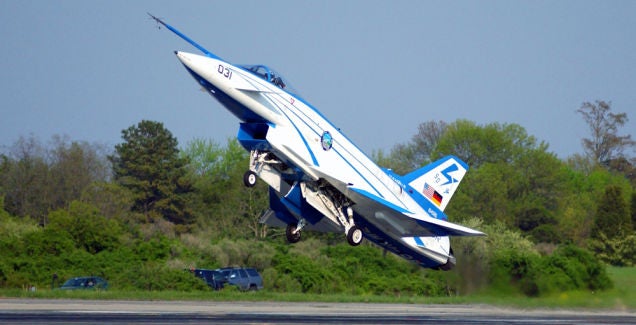
As part of the test program, the X-31 was pitted against comparable fighter aircraft that did not possess thrust vectoring. The results were quite impressive, with the X-31 tallying a potential kill ratio of 30 to 1. Two test aircraft were built, and a total of 580 missions were flown before the initial testing program ended in 1995 (the first aircraft was lost in a crash that same year). The second aircraft was transferred to the US Navy Test Pilot School at Patuxent River NAS in Maryland for additional research and, at the end of that program in 2003, the remaining X-31 was sent to Germany where it is on display at the
Deutsches Meseum Flugwerft Schleissheim
. Thrust vectoring is now found operationally on the
Lockheed F-22 Raptor
, the Russian
Sukhoi Su-30
,
Sukhoi PAK FA
, well as various other experimental aircraft.
(NASA photo; US Navy photo)
!!! UNKNOWN CONTENT TYPE !!!
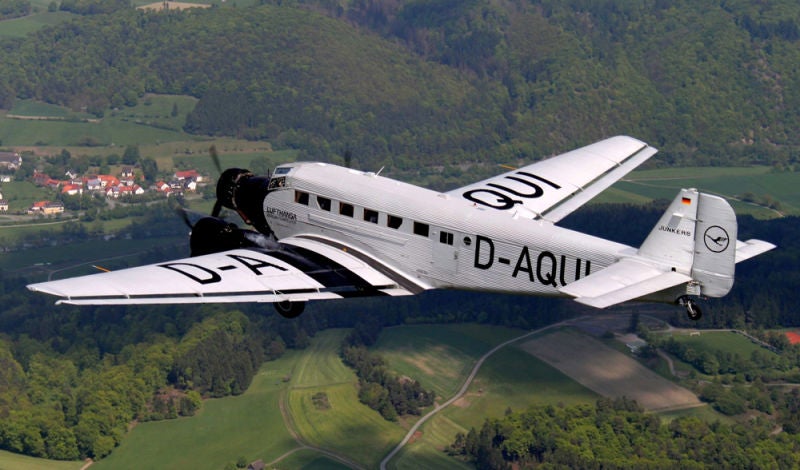
October 13, 1930 – The first flight of the Junkers Ju 52. Throughout the history of aviation, there are only a small handful of aircraft that have exceeded fifty years of service. Such a milestone can only be reached by truly breakthrough designs that can stand the test of time and remain relevant long after they were first conceived. One member of the fifty-year club is the Junkers Ju 52. But the tri-motor aircraft we know today was not the aircraft’s original form. The 52 had its roots in the Junkers W 33 , a single-engine transport and cargo plane that was developed from the Junkers F.13 , the world’s first all-metal transport plane. Junkers took the cantilever monoplane design, made sturdy with its corrugated duralumin fuselage, and enlarged it to increase the passenger and cargo capacity. With power coming from a single Junkers or BMW liquid-cooled V-12 engine, the Ju 52/1m (1 motor) was underpowered for its size and weight. After the first seven aircraft were built, the Ju 52/1m became the Ju 52/3m with the fitting of three BMW 132 air-cooled radial engines, one in the nose and one each on the wings. This configuration was later copied by Ford for their Trimotor , and Junkers successfully sued to block the sale of Trimotors in Europe. The 3m proved to be an exceptionally rugged and reliable aircraft, and entered service with Lufthansa as a civilian airliner before the outbreak of WWII. But, by 1935, with the nationalization of the German aviation industry, the Ju 52 became an instrument of war. The size and strength of the 52 was ideal for transport, cargo and paratroop operations, earning it the nickname Iron Annie . It had its baptism of fire with the Colombian Air Force in the Colombia-Peru War of 1932-1933, and with Bolivia in the Chaco War of 1932-1935. The Ju 52 made its debut in combat with the Luftwaffe during the Spanish Civil War .
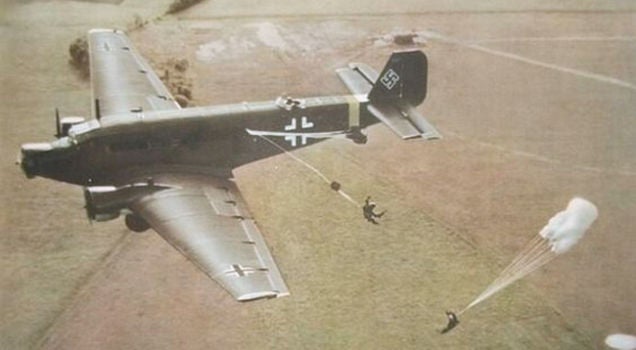
However, by the start of WWII, its lack of speed (it was only half as fast as the British
Hawker Hurricane
) meant that combat operations required fighter escort. In one disastrous mission in Holland early in the war, 278 Ju 52s were lost either to anti-aircraft fire or crashes in boggy fields, a record for the most losses of a single type in a single day. But despite the shortcomings of what was by all accounts an obsolete aircraft at the start of the war, the Ju 52 served throughout WWII because the Germans had no other aircraft that could perform its job in great numbers. German production of the Ju 52 ended with the fall of Germany in 1945, but continued for two more years in factories they had built in France. In Spain, where it is known as the CASA 352, production continued until 1952. In all, over 4,800 aircraft were built, and the Ju 52 was flown by 38 nations. The last country to operate the Ju 52 militarily was Switzerland, who retired their last aircraft in 1982.
(Top photo by Markus Kress via
Wikimedia Commons
; second photo author unknown)
!!! UNKNOWN CONTENT TYPE !!!
!!! UNKNOWN CONTENT TYPE !!!
!!! UNKNOWN CONTENT TYPE !!!
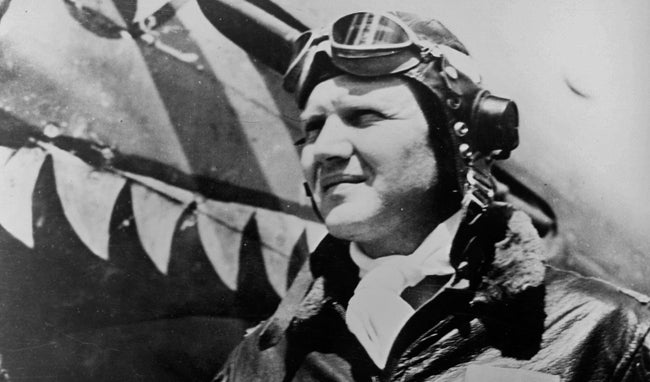
October 11, 2007 – The death of David Lee “Tex” Hill. Born July 13, 1915 in Terrell Hills, Texas, Hill began his flying career as a Naval Aviator flying the Douglas TBD Devastator before joining the American Volunteer Group (AVG), better known as the Flying Tigers , fighting on behalf of Nationalist China in WWII. After the deactivation of the AVG in 1942, Hill was one of only a handful of AVG pilots that reintegrated into the US Army Air Corps, and tallied six more victories with the 23d Fighter Group to bring his total to 18.25. In 1944, Hill assumed command of the 412th Fighter Group , the first operational US jet fighter wing, and in 1946 he assumed command of the 136th Fighter Group of the Texas Air National Guard (ANG). He flew combat missions in the Korean War, eventually becoming the youngest brigadier general in ANG history. For his service, Hill was awarded the Distinguished Service Cross , the Silver Star , the Distinguished Flying Cross , the Legion of Merit , and British Distinguished Flying Cross among others. (US Army photo)
!!! UNKNOWN CONTENT TYPE !!!

October 11, 1984 – Astronaut Kathryn Sullivan becomes the first American woman astronaut to perform a spacewalk. During mission STS-41-G of the Space Shuttle Challenger , Sullivan, along with astronaut David Leestma , spent 3.5 hours in space working on a system to refuel satellites in orbit. Sullivan is the third American woman to fly in space ( Sally Ride , Judith Resnick ), and took part in a total of three Shuttle missions before leaving NASA in 1993. (NASA photo)
!!! UNKNOWN CONTENT TYPE !!!
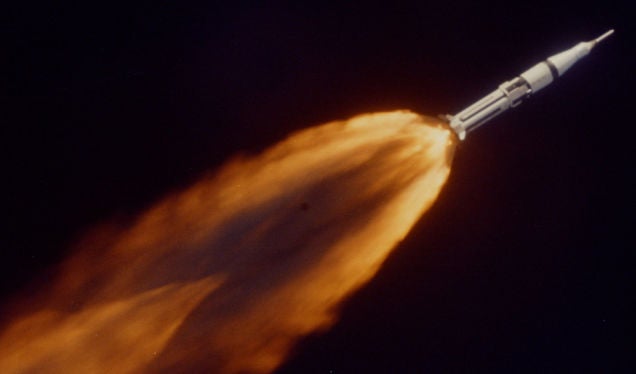
October 11, 1968 – The launch of Apollo 7, the first successful manned Apollo mission.
After a 19-month hiatus in manned flights following the tragic fire on
Apollo 1
that killed three astronauts, Apollo 7 carried out the mission originally scheduled for the ill-fated Apollo 1 crew after improvements were made to the command module and other safety procedures were put in place. The crew of Apollo 7 consisted of
Wally Schirra
(Commander),
Donn Eisele
(Command Module Pilot) and
Walter Cunningham
(Lunar Module Pilot), and their mission spent 11 days orbiting the Earth. Apollo 7 was also the first manned launch of the
Saturn IB
launch vehicle, and the crew performed the first live American television broadcast from space.
(NASA photo)
!!! UNKNOWN CONTENT TYPE !!!
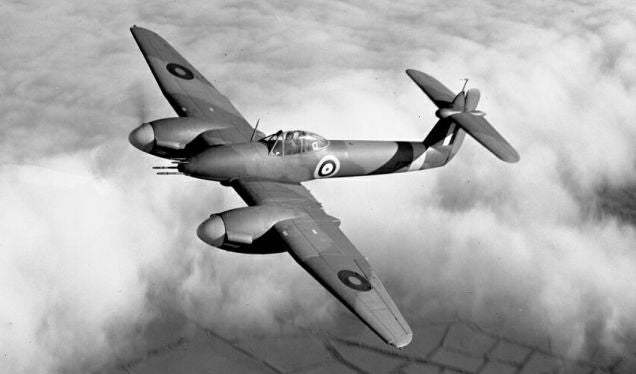
October 11, 1938 – The first flight of the Westland Whirlwind, a twin-engined heavy fighter and the first Royal Air Force warplane to have a single seat, twin engines and cannon armament. As part of an effort to field an aircraft with heavier armament than the rifle-caliber guns of the Hawker Hurricane and Supermarine Spitfire , the Air Ministry issued specification F.37/35 in 1935 to develop an aircraft capable of carrying four cannons. Powered by two Rolls-Royce Peregrine V-12 engines and with a top speed of 360 mph, the Whirlwind was introduced in 1940, but its lack of performance at altitude limited it mainly to ground attack and anti-shipping missions. A total of 116 were built, and the type was retired in 1943. (British Government photo)
!!! UNKNOWN CONTENT TYPE !!!
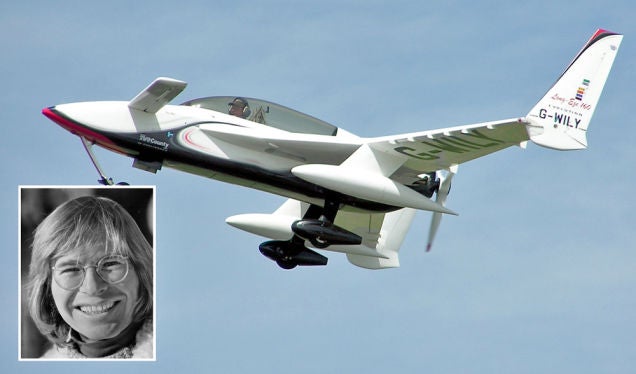
October 12, 1997 – The death of John Denver. Denver is best known as a successful singer and songwriter, but he was also an avid pilot, with over 2,700 hours of experience and pilot ratings in both single- and multi-engine aircraft, as well as glider and instrument ratings. On the day of his death, Denver was practicing touch-and-go landings at Monterey Peninsula Airport in California in his Rutan Long-EZ (N555JD). The builder of the aircraft (not Denver) had placed the fuel gauge and switch for the two fuel tanks behind the pilot’s seat, making it difficult to monitor the fuel and operate the switch. NTSB crash investigators surmised that Denver attempted to twist his body to operate the switch, lost control of the aircraft, and crashed into Monterey Bay. Investigators also cited unfamiliarity with the aircraft and an insufficient fuel load at takeoff as factors in the crash. (Long-EZ photo—not accident aircraft—via Wikimedia Commons ; Denver photo Hughes Television Network via Wikimedia Commons )
!!! UNKNOWN CONTENT TYPE !!!

October 12, 1976 – The first flight of the Sikorsky S-72, a hybrid helicopter/fixed wing aircraft that was developed by NASA and the US Army. Assembled from different parts of Sikorsky S-61 and S-67 helicopters, the goal of the research program was to allow in-flight measurements of helicopter rotor characteristics prior to fitting them on prototype helicopters, though the S-72 was also capable of flight without a main rotor. The S-72, also called the Rotor Systems Research Aircraft (RSRA), took its first full compound flight in 1978, but the program was canceled in 1988. (NASA photo)
!!! UNKNOWN CONTENT TYPE !!!
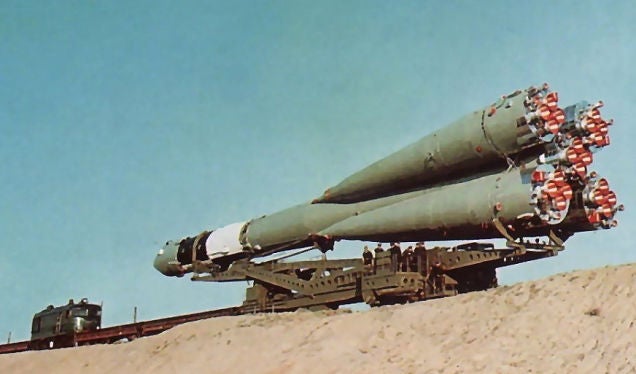
October 12, 1964 – The launch of Voskhod 1, the seventh manned space flight of the Soviet space program. Based on the Vostok spacecraft, Voskhod 1 had an added solid-fuel retro-rocket fitted to slow its descent. The flight is notable as being the first to carry three crewmen into orbit—a cosmonaut, an engineer and a physician—and the first in which the cosmonauts did not wear spacesuits. The bulky spacesuits were removed so that all three cosmonauts could fit into a capsule designed for only two. The standard ejection seats were also removed and replaced with three simple couches. The flight set an altitude record of 209 miles above the Earth, and the crew primarily carried out biomedical research. After 24 hours in space, Voskhod 1 returned to Earth on October 13. (Photo author unknown)
!!! UNKNOWN CONTENT TYPE !!!
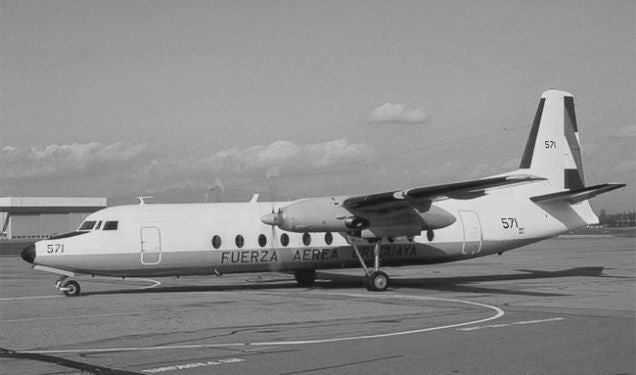
October 13, 1972 – An airliner carrying a rugby team and other passengers crashes in the Andes. The chartered Uruguayan Air Force Fairchild FH-227D carrying 45 passengers and crew crashed in the Andes on the way to a rugby match in Chile when the flight crew initiated their descent prematurely through a fog-shrouded mountain pass. Twelve passengers died as a direct result of the crash, and five more died the following day from their injuries. A further eight died in an avalanche, and the remaining victims resorted to cannibalism to survive. After two survivors walked for nine days to find help, the remaining 16 survivors were finally rescued on December 23, two months after the crash. Their ordeal was dramatized in the 1993 feature film Alive . (Photo by Pedro Escobal via Wikimedia Commons)
!!! UNKNOWN CONTENT TYPE !!!
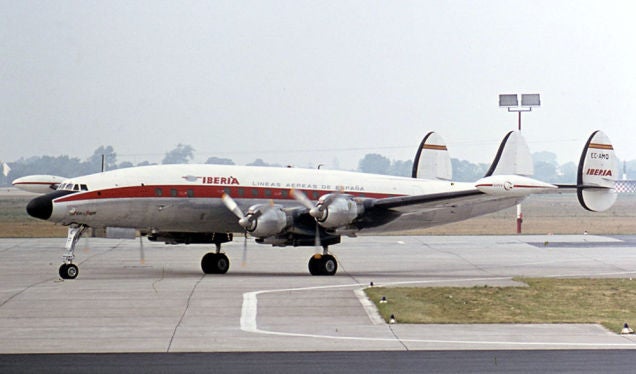
October 13, 1950 – The first flight of the Lockheed L-1049 Super Constellation, the first major variant of the original L-1049 Constellation to enter production. Faced with competition from the rival Douglas DC-6 , which could carry more passengers and generate more revenue, Lockheed added 18 feet to the fuselage that allowed up to 105 passengers, increased the fuel capacity, fitted larger windows and improved the cabin heating and pressurization. The result was an aircraft that equaled the DC-6 in performance, and though it had a shorter range it could carry a greater payload. The Super Connie also served with the USAF as a transport and part of the airborne warning and control system (AWACS) as the EC-121 Warning Star . (Photo by Ralf Manteufel via Wikimedia Commons )
!!! UNKNOWN CONTENT TYPE !!!
!!! UNKNOWN CONTENT TYPE !!!
!!! UNKNOWN CONTENT TYPE !!!
!!! UNKNOWN CONTENT TYPE !!!
!!! UNKNOWN CONTENT TYPE !!!
!!! UNKNOWN CONTENT TYPE !!!
!!! UNKNOWN CONTENT TYPE !!!
If you enjoy these Aviation History posts, please let me know in the comments. And if you missed any of the past articles, you can find them all at
Planelopnik History
. You can also find more stories about aviation, aviators and airplane oddities at
Wingspan
.
!!! UNKNOWN CONTENT TYPE !!!

10/13/2017 at 12:57, STARS: 3
One of the more interesting series of test flights of the X-31 involved reprogramming the computers to utilize the TVN (although I guess TVP would be more accurate, as the X-31 didn’t have a nozle) rather than the rudder to stabilize the aircraft, virtually removing the tail. There was talk of literally removing the tail later, as seen in this edited photo:
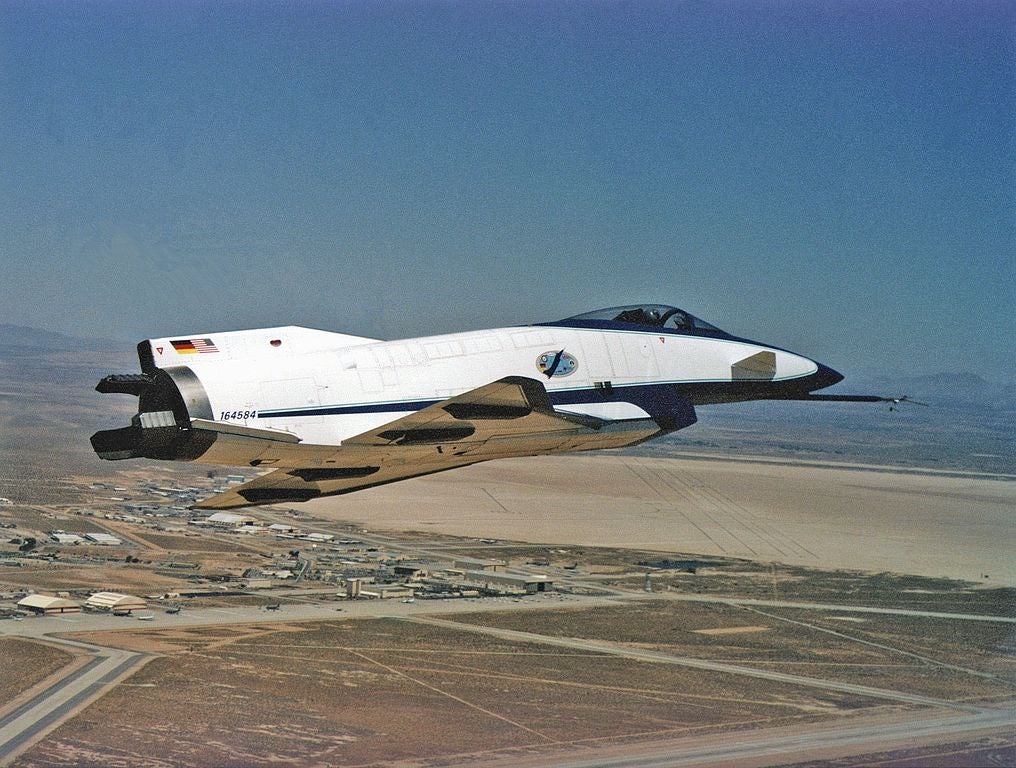
 "Rock Bottom" (rockbottom81)
"Rock Bottom" (rockbottom81)
10/13/2017 at 13:29, STARS: 2
About 5 years ago I walked through one of the old blimp hangars at NASA Ames, and stashed away in the corner were both the RSRA and the QSRA. It was a pleasant surprise, to say the least! It had no rotor blades installed, though it was wearing a bare hub from what looked like a Sikorsky H-3. I was told that NASA Ames had orders from NASA headquarters to destroy both aircraft years before, but a rogue group or technicians had hidden them from auditors to preserve them. No idea what their disposition is today, sadly.
NINJA EDIT: According to Google Maps, they are both still there at Ames, but sitting outside now. First pic shows the RSRA and a mystery machine parked near the tarmac North of the naked Hangar 1. The second pic shows QSRA sitting all alone and dirty in a field on the North end of the complex.

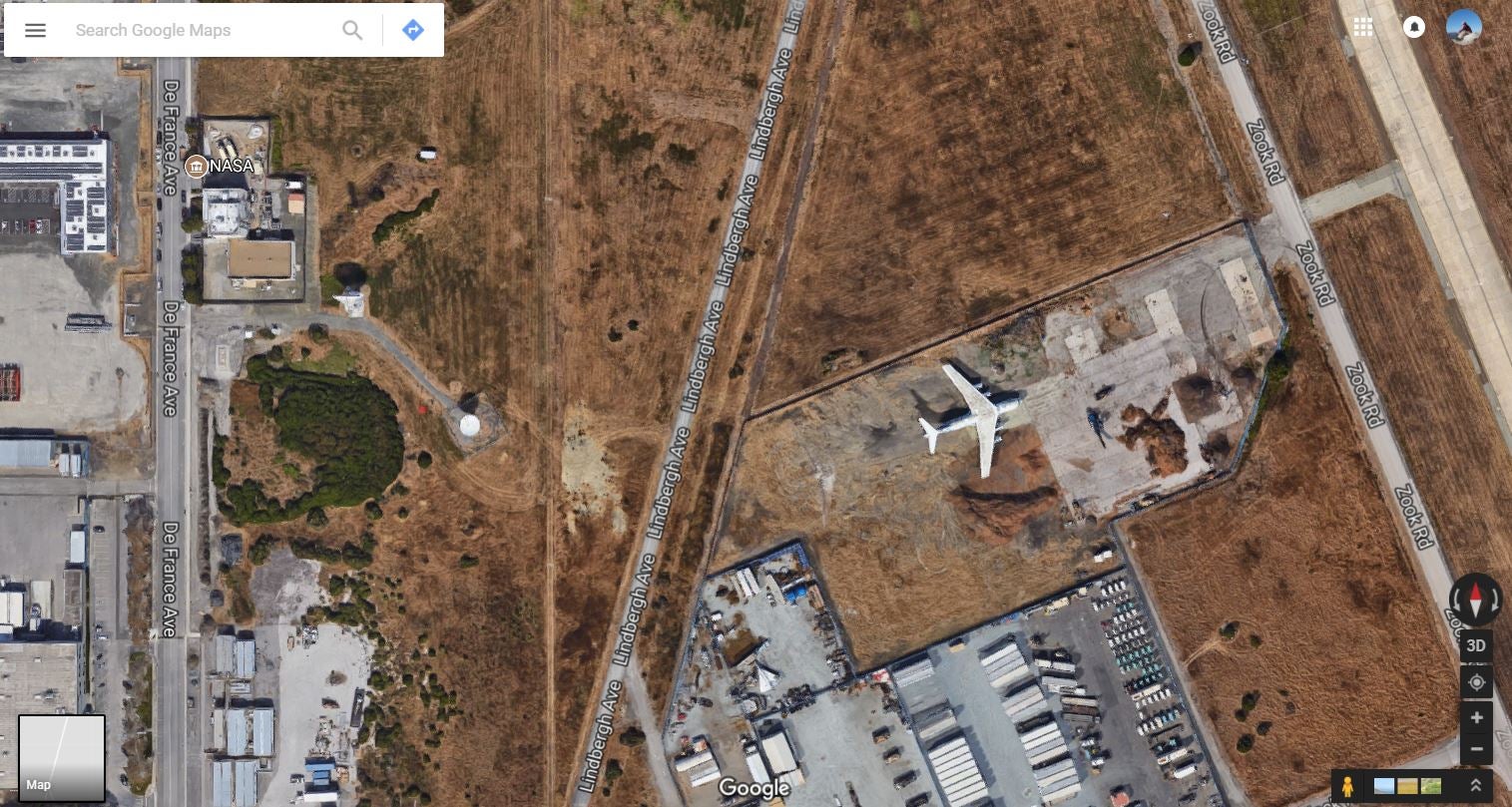
 "ttyymmnn" (ttyymmnn)
"ttyymmnn" (ttyymmnn)
10/13/2017 at 14:52, STARS: 0
That’s awesome. Thanks for posting.
 "ttyymmnn" (ttyymmnn)
"ttyymmnn" (ttyymmnn)
10/13/2017 at 14:56, STARS: 0
There are a lot of people out there who don’t know that photo is shopped.

10/13/2017 at 15:04, STARS: 2
The amount of pics traded via social media (especially Facebook) that people can’t (or don’t want to) figure out are shopped, composited or otherwise faked is staggering.
 "ttyymmnn" (ttyymmnn)
"ttyymmnn" (ttyymmnn)
10/13/2017 at 15:07, STARS: 2
